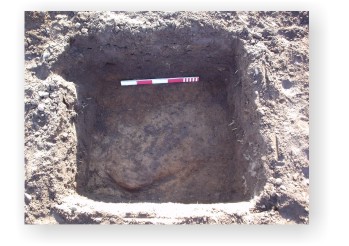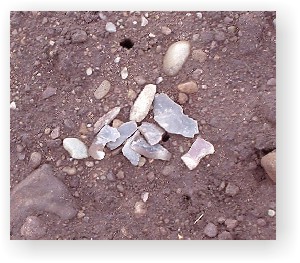Lanton Quarry
Test Pitting
Test pits are usually used alongside other types of archaeological investigation. For example, if a field is under pasture test pits can be opened up to test for the presence of artefacts in the ploughsoil as well as whether buried archaeological features survive in the subsoil. Test pits can also be used to examine surface artefact clusters found during field walking.
The sizes of test pits can vary although they are typically 1m, 2m or 5m squares. When a number of test pits are opened in one area they are set out in a grid and are spaced at intervals. The soil that is removed from the pit is sieved for small finds. Test pits also reveal the sediment sequence present on a site and this provides a good indication of preservation conditions.
A test pit was excavated at Lanton Quarry as part of the fieldwalking survey. The position of the pit was determined by the location of a flint cluster found above it. The flints had been brought to the surface by the plough after it had cut into the top of a buried pit. To find out what was discovered in the test pit please use the 'Neolithic' link in the 'Archaeological Discoveries' section on the left hand side of this page.
An example of a test pit excavated through the ploughsoil at Lanton Quarry revealing part of a buried pit feature |
The flint cluster that was found during fieldwalking and which determined the location of the test pit |

